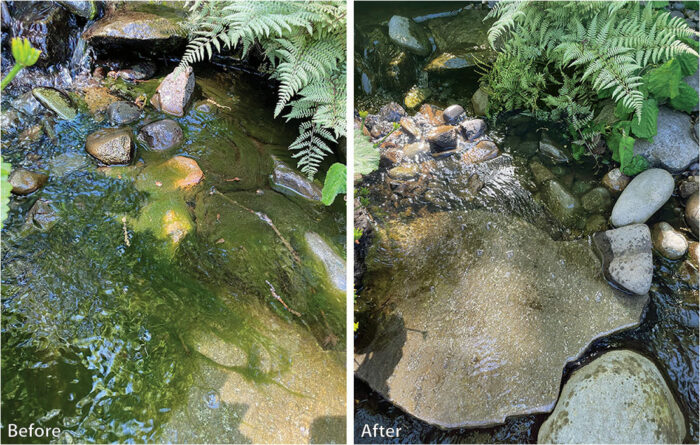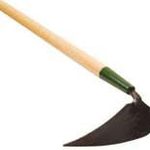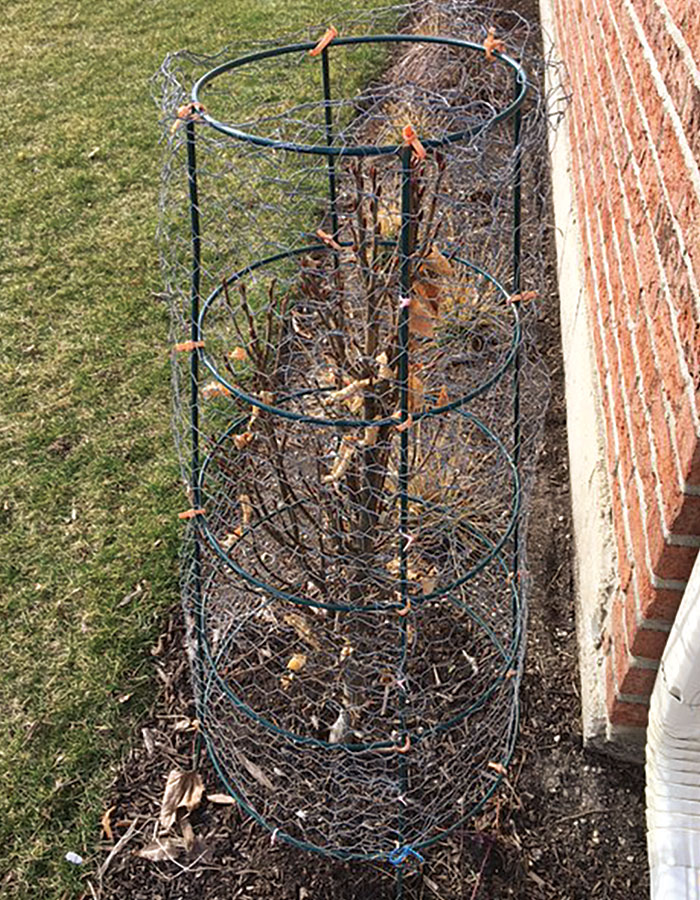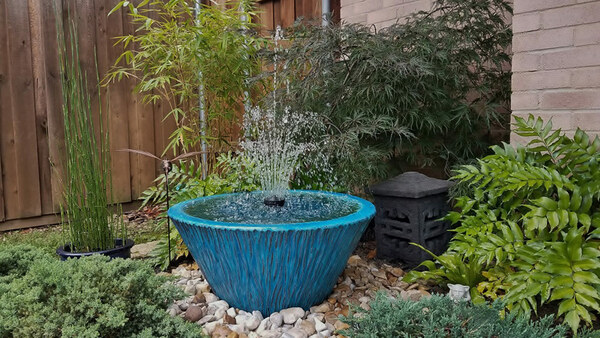
Winning Tip: I’m gonna wash that algae right outa my water feature
A quick way to clean the algae out of a garden water feature after a long, dark, and wet winter is to use a power washer. It only takes a few minutes to dislodge the long mats of algae, and the low volume of water that blows out of the nozzle doesn’t disturb even the smallest of rocks. Start at the top of where the water flows and work your way down to the bottom of the feature. This is a lot easier and more effective than grabbing the strands by hand and then using a brush to clean the rest away. You can see the difference in these “before” and “after” photos. I enjoy this a lot more than power washing the patio.
—Jeffrey Steiner, Albany, Oregon
Defend your plants from hungry rabbits in winter
There are a number of plants rabbits attack in the winter that they never even touch during the growing season. While there are some very good repellents, who wants to go out in a snowstorm to reapply?
The bunnies have (not so kindly) taste-tested my specimen plants—fothergilla, dwarf hornbeam, and variegated cotoneaster—so I’m proactive now. Using multi-tier, heavy-duty plant hoops as frames, I form and then cut chicken wire to fit snugly around the outside. I attach the wire to the hoops with plastic zip ties. Then I place these cages over the top of the susceptible plants before the ground freezes and the rabbits come looking for a meal. I pull off the cages in spring and then stack and store them intact, ready to protect my plants again in fall.
—Tony Fulmer, Arlington Heights, Illinois
Golf tees as garden markers
To mark the placement of bulbs and seeds I’ve planted in the garden, I purchased a large bag of multicolored golf tees (the tallest available). I use the different colors to code what is planted. The tees slide easily into the ground near the seeds or bulbs, which makes it easy to watch for new growth and to be careful when weeding or mowing in the vicinity. This is particularly helpful after planting in fall so that in spring I know when seedlings are coming up and do not mistakenly pull them up as weeds.
—Robin Hess, Hampton Falls, New Hampshire
New life for damaged tomato plants
If I have a tomato plant that has been knocked over in a storm or broken, I know it can be saved. I remove the lower leaves, make a neat cut with a sharp knife at the break, and place it in clean water, enough to submerge half of the stem. Within a week, small roots emerge from the bottom of the stem. In two to three weeks the portion of the stem underwater will produce bushy roots. I plant it in loose soil mixed with grass clippings or compost in a 3:1 ratio, then gradually introduce the rooted stem to sunlight, as if I were hardening it off.
—Mary Crum, Fort Myers, Florida
A versatile, easy-to-use tool you didn’t know was a tool
I’ve been gardening for 30 years, and somewhere along the way I discovered that my most indispensable tool is a plastic sled. I drag bags of mulch, tools, pots, and whatever else I need on my sled to where I want to work. I cut up perennials on the sled’s hard, smooth surface. I drag stuff to the composter on it and haul bags of yard waste to the curb on it. It has no working parts to maintain, hoses off easily, has no turning radius, and can be hung on a wall hook so that it doesn’t take up any floor space. And if you shop in late winter, you can usually find a sled for about $10. You just have to get past the silliness of pulling a snow sled across your yard in the summer. I’ve found that I can’t garden without one.
—Mary Douglas, Bellingham, Washington
Still gardening after all these years
As an 88-year-old still-wanna-be gardener, two easy-to-obtain items have come to my aid: (1) a salt shaker helps me to spread small seeds more uniformly, and (2) a long, thin but sturdy stick supports me as I reach down for something. The stick also serves as a third hand for tasks like rearranging a row cover. With shaky hands and stiff knees, I look for easy helps.
—Lucy Andrew Butterworth, Marshall, North Carolina
We need your gardening tips!
If you have a gardening tip, send it to fg@taunton.com. We pay $25 for each tip we publish. The prize for the winning tip is a one-year subscription to Fine Gardening.
Photos: courtesy of the contributors
Fine Gardening Recommended Products

Gardener's Log Book from NYBG
Fine Gardening receives a commission for items purchased through links on this site, including Amazon Associates and other affiliate advertising programs.

Long Handle EZ-Digger
Fine Gardening receives a commission for items purchased through links on this site, including Amazon Associates and other affiliate advertising programs.

A.M. Leonard Deluxe Soil Knife & Leather Sheath Combo
Fine Gardening receives a commission for items purchased through links on this site, including Amazon Associates and other affiliate advertising programs.



















Comments
Log in or create an account to post a comment.
Sign up Log in